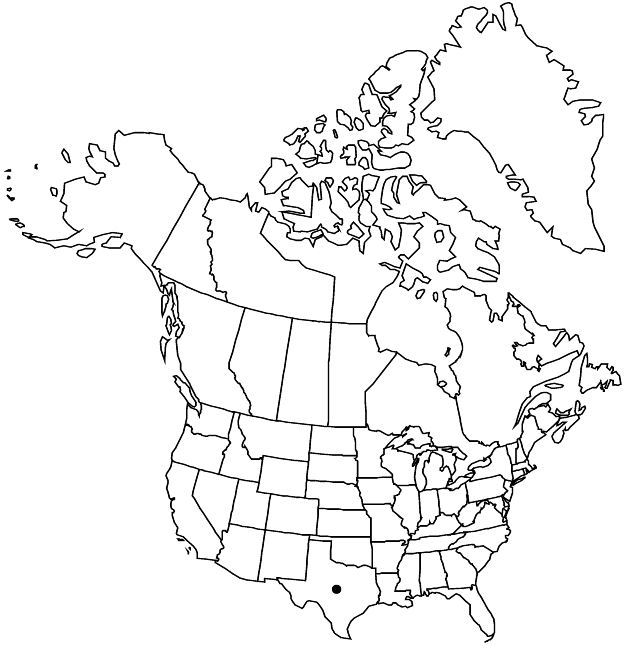Difference between revisions of "Euphorbia laredana"
Pittonia 2: 88. 1890.
FNA>Volume Importer |
FNA>Volume Importer |
||
| Line 51: | Line 51: | ||
|publication year=1890 | |publication year=1890 | ||
|special status= | |special status= | ||
| − | |source xml=https://jpend@bitbucket.org/aafc-mbb/fna-data-curation.git/src/ | + | |source xml=https://jpend@bitbucket.org/aafc-mbb/fna-data-curation.git/src/f6b125a955440c0872999024f038d74684f65921/coarse_grained_fna_xml/V12/V12_274.xml |
|genus=Euphorbia | |genus=Euphorbia | ||
|section=Euphorbia sect. Anisophyllum | |section=Euphorbia sect. Anisophyllum | ||
Revision as of 18:16, 24 September 2019
Herbs, annual, with taproot. Stems prostrate, ± mat-forming, 10–20 cm, densely ashy pilose-tomentose. Leaves opposite; stipules distinct, filiform, 0.5–1 mm, pilose-tomentose; petiole 0.5–1 mm, pilose-tomentose; blade ovate to elliptic-oblong, 3–6 × 3–5 mm, base markedly asymmetric, rounded to slightly auriculate, margins usually entire, rarely largest leaves sparsely serrulate, apex acute to obtuse, surfaces moderately to densely strigose; 3-veined from base. Cyathia solitary or in small, cymose clusters at distal nodes or on congested, axillary branches; peduncle 0.5–1.5 mm. Involucre obconic, 0.6–1 × 0.5–1 mm, densely strigose; glands 4, yellowish to reddish, oval to oblong, 0.1 × 0.2–0.3 mm; appendages white to pink, rudimentary or minute, (0–)0.1–0.2 × (0–)0.1–0.3 mm, distal margin crenulate. Staminate flowers 3–5. Pistillate flowers: ovary densely white villous; styles 0.1–0.2 mm, 2-fid 1/2 length. Capsules broadly ovoid, 1.3–1.5 × 1.4–1.5 mm, villous on keels, often glabrous or less hairy between keels; columella 1.1–1.3 mm. Seeds white, barely concealing brown undercoat, 4-angled, sharply angled in cross section, abaxial faces plane to convex, adaxial faces concave, 1.1–1.2 × 0.5–0.7 mm, with several rounded, irregular, transverse ridges.
Phenology: Flowering and fruiting almost year-round.
Habitat: Open sandy, loamy, or gravelly sites, old dunes, pastures.
Elevation: 0–200 m.
Distribution

Tex., Mexico (Tamaulipas).
Discussion
Euphorbia laredana is similar to E. prostrata but differs from that species in its more densely tomentose indumentum, leaves with usually entire rather than serrulate margins, and slightly longer seeds with rounded rather than sharp ridges. The species occurs primarily in southern Texas.
Selected References
None.